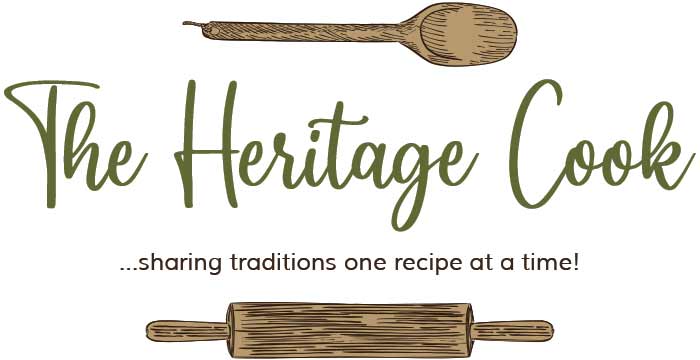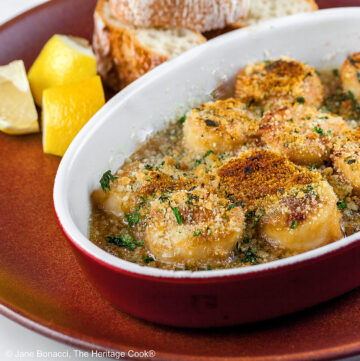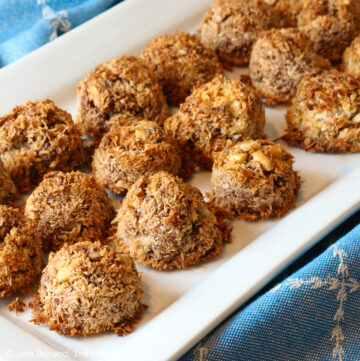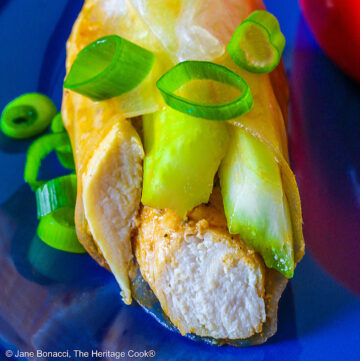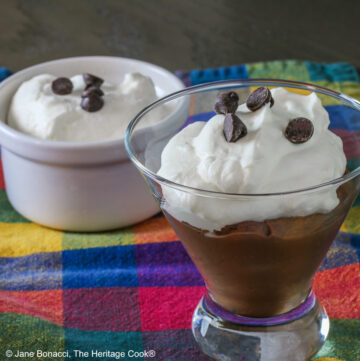The easiest thing to do when you are diagnosed with celiac disease or gluten-intolerance is to buy a gluten-free flour blend at a specialty or grocery store. This is perfectly fine if you are cooking occasionally for friends with Celiac or gluten-intolerance. However, if you bake and cook a lot, this can quickly become quite expensive. Learning to create your own “all-purpose” flour blend of non-gluten flours and starches is one way to help control costs.
My personal favorite blends are the two I developed for our book, “The Gluten-Free Bread Machine Cookbook“. I use them interchangeably for all my GF baking projects and whenever a recipe calls for flour, everything from cookies and cakes to breads and biscuits.If you are converting a recipe to gluten-free, use 120 grams of the flour blend for each 1 cup flour called for in the recipe plus 1/4 tsp xanthan gum or 1/2 tsp psyllium husk powder. If you are making bread, we recommend using about 1 tsp xanthan (or 2 tsp psyllium) for tender bread that doesn’t fall apart.
These flour blend recipes can easily be halved or doubled and are easy to put together and store in a tightly sealed container like this one from Cambro. Be sure to order a cover too. This container is commercial-grade and will last for years.
Light Flour Blend
– perfect for recipes where you want other flavors to shine
Yield: 800 grams, 1.7 lb / 28 oz
- 280 g (2 cups + 4-3/4 tsp) white rice flour or brown rice flour, preferably from Authentic Foods
- 280 g (2 cups + 2 tbsp) sweet rice flour (not the same as white rice flour), preferably from Authentic Foods
- 120 g (1 cup + 4-3/4 tsp) tapioca flour/starch
- 120 g (1/2 cup + 3 tbsp + 2-1/4 tsp) potato starch (not potato flour)
Whole-Grain Flour Blend
– a good option if you want more fiber in your diet
Yield: 800 grams, 1.7 lb / 28 oz
- 200 g (1-3/4 cups + 1/4 tsp) millet flour
- 200 g (1-1/2 cups + 3/4 tsp) sweet rice flour (not white rice flour), preferably from Authentic Foods
- 160 g (1-1/3 cups + 2-1/2 tsp) sorghum flour or brown rice flour, preferably from Authentic Foods
- 120 g (1 cup +4-3/4 tsp) tapioca flour/starch
- 120 g (1/2 cup + 3 tbsp + 2-1/4 tsp) potato starch (not potato flour)
Directions: Weigh each ingredient individually with a kitchen scale and pour into a large bowl. Clear the weight (tare/zero button) and weigh the next ingredient. When you have them all combined, whisk until fully incorporated. and transfer to a large food-safe plastic bin, such as the Cambro listed above. Secure the lid on the container and shake vigorously to evenly distribute all the ingredients. Gluten-free flours tend to settle and sometimes separate while sitting. So always shake the container well before measuring for each baking project.
If you don’t bake often or are just beginning your gluten-free lifestyle, there are a number of all-purpose gluten-free mixes on the market that are terrific. In my opinion, these are at the top of commercial blends readily available in markets across the US:
- Bob’s Red Mill 1-to-1 Baking Flour
- Cup4Cup
- King Arthur Gluten-Free Measure for Measure Flour
- Pamela’s Gluten-Free All-Purpose Flour
If you are using a commercial or gluten-free flour blend other than the two recipes listed above, carefully measure* 1 cup and weigh it. Use that as your base weight in converting recipes.
*For the most accurate measure, whisk the flour blend and gently scoop it into the measuring cup until overflowing. Use a straight edge to scrape the excess off until it is even with the top of the cup. Weighing ingredients is infinitely more accurate than any other way of measuring, giving you the most consistent results.
If you need a Self-Rising Flour blend:
In a bowl, combine 2 cups (240 g) of your flour blend, 2 tbsp baking powder, and salt. Whisk together and use as directed in your recipe.
If you need Cake Flour:
For each cup of flour, take out 2 tbsp and replace it with 2 tbsp of cornstarch (or another starch if you cannot have corn, such as potato starch or arrowroot). Whisk thoroughly and use as directed in your recipe.
My Story:
As of July 2012 when I was diagnosed with gluten-intolerance, all of the recipes on this website include both gluten-free and regular options , and the photographs are of my own gluten-free foods. That means that if I can do it, so you can you!
I was devastated when I got my diagnosis and spent the first month just trying to figure out what I could eat. What was a food writer going to do when she could no longer eat most items on restaurant menus? How was I going to continue with Chocolate Mondays when I had heard horror stories of how difficult gluten-free baking was?
When I went to the grocery store, formerly one of my favorite pastimes, the only things I could see were things that I could not have. Our first trip took nearly three hours as The Artist and I went up and down every aisle, trying to find foods that were safe for me. It was also extremely expensive because I bought one of everything I could find to try. Eventually I found the basics that would save me from starving when I needed snacks between meals. It took me a while to restructure my perceptions so that now when I go grocery shopping, I see all the foods I CAN eat!
The biggest challenges were convenience foods that I had depended on for meal preparation. Now I had to do many things completely from scratch. Not that big a stretch for me because I always loved to cook and bake, but still an adjustment. For those who have never cooked, it is a huge challenge. I hope that my recipes, directions, hints, tips, and guidance will help you feel more comfortable in the kitchen. You can always leave a comment with questions or email me if you need more help.
Good luck with your diagnosis or life-style change. It really is better on the other side!
